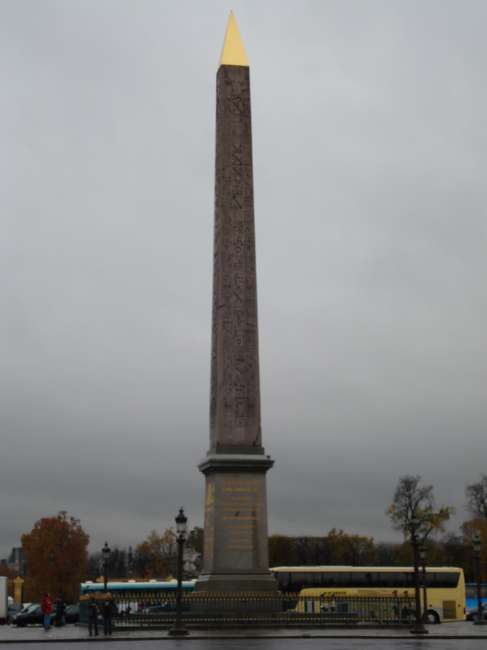Egypt: Cairo
- Description
- View Photographs
NDP Headquarters
Burned out NDP Headquarters after the Jan 25, 2011 uprising. Read more ...
Wednesday, January 25, 2012NDP Headquarters and a Century of Revolts
Popular, or people`s revolts, are no stranger to Egyptians. Over the past century, there have been a total of five popular revolts in Egypt. Some revolts succeeded in removing the regime, others sufficed in partial success moving the country an inch forward, and other totally failed. The most recent of these revolts was against the repressive and controlling regime of Mubarak when people broke through the psychological barrier of fear and revolted against his regime exactly a year ago on January 25, 2011. One icon of this revolution is the burnt out headquarters building of the ruling National Democratic Party (NDP). In this article, Egypt`s history of five popular revolts are reviewed. I think it will be clear to the reader, that although the names change over time that history does indeed repeat itself. Egyptians` three demands over the past century have consistently been: dignity, freedom, and social justice for all.
To understand the origins of this revolution and compare it to recent uprisings in Egyptian history, Egypt`s five revolts over the past century or so are first reviewed. Egypt`s first revolt occurred on January 8, 1882 and was led by a general with the name of Ahmed Urabi. This revolt became known as the Urabi revolt of 1882. In 1805, Muhammad Ali, the founder of the modern state in Egypt, took Egypt control over Egypt and took it out of the Middle Ages modernizing its economy, army, and society. The result of his rule is that a new middle class emerged in Egypt that was generally educated and well aware of the political and social conditions in the country. The reforms also brought Egypt closer to Western imperial nations as they took notice of the country`s robust economy. In 1865, Egypt`s economy took a nose dive as the price of cotton, Egypt`s main export product, on the world market plummeted. This was mainly due to the end of the American Civil War that marked the resumption and increase of American cotton export, flooding the market and driving the price of cotton significantly lower. Egypt continued to struggle with its economy for several years. Khedive Tewfik (Egyptian ruler at the time) started to institute measures to curtail spending, which meant cutting back on the public sector`s workforce, which included the army. The army was reduced from over 100,000 to less than 30,000. Disgruntled unemployed soldiers started to riot against their conditions, especially when the monarchy and a select elite enjoyed a life of excess and lavish prosperity. The monarchy was viewed as being foreign, Turkish in origin, and detached from the rest of the population. By the latter half of 1881, Ahmed Urabi, an Egyptian general led a group of disgruntled soldiers and asked Khedive Tewfik to step aside. On January 8, 1882, the British decided to intervene on behalf of the monarch and reconfirmed his position of the Ottoman ruler of Egypt. An armed revolt led by Urabi after this declaration led to a crisis and eventually ended when the British intervened militarily and defeated Urabi`s army at the Battle of Tel el-Kebir. The outcome of this revolt was a shaken, but intact monarchy, the occupation of Egypt by British forces in 1882, and the leader of the revolt, Ahmed Urabi, was exiled to present day Sri Lanka.
The next revolt came in 1919. The political conditions in Egypt have not changed since the time of Urabi. What triggered this revolution was the strain that the British army placed on Egypt during the First World War. The British government declared that Egypt would share the burden of the war and perform its part. Egypt was declared a British protectorate in 1914, officially severing it from the Ottoman Empire. Half a million Egyptians were conscripted to the labor corps. Property, land and food supplies were requisitioned in favor for the British soldiers. People were patient with these measures in hope that it would eventually lead to their independence. When Saad Zaghloul, the head of the Wafd Party, approached the British High Commissioner with their proposal for independence and a separate seat in the Paris peace conference at the conclusion of the First World war in 1919, the population`s expectations were a declaration of Egyptian independence. People went in mass demonstrations to bolster Saad Zaghloul`s position in March 1919. Noticing Saad Zaghloul`s popular position, the British exiled him and two other officials from the Wafd Party to Malta. This infuriated the Egyptian public and led to mass demonstrations. In a span of only two weeks (March 15 – 31, 1919), more than 3000 Egyptians were killed, entire villages and public infrastructure were destroyed all at the hands of British soldiers. At this point, the entire population revolted against the British. This included students, workers, farmers, religious leaders, and the aristocracy. The revolts violently targeted British military installations. The British finally caved in and declared Egyptian independence and Saad Zaghloul became Egypt`s first elected Prime Minister in 1924. A multitude of parties formed in Egypt starting at this time (including leftist, Communist, Muslim Brotherhood, Socialist, and several other parties) that formed some level of representation in the country. The Egyptian independence, however, was only by name since the king still ruled Egypt and the British military did not leave Egypt. The British High Commissioner still had the final say in Egyptian government affairs.
The next revolt was on January 1952, when people, once again, protested corruption of the monarchy and the continued presence of British troops. The trigger of this revolt, this time, was the destruction of an Egyptian police station on the hands of 7,000 British soldiers who were demanding that it surrender anti-British insurgents. This confrontation led to the use of machine guns, tanks and armored vehicles against a police force of 700 Egyptian officers armed only with rifles. The result was a massacre in which 50 police officers died on January 25, 1952. The next morning, January 26, 1952, a large group of university and high-school students marched onto Abdeen Palace where the king resided, demanding that he sever ties with Britain and to declare war on it. Eye witnesses report another group of people joined the ranks of the protesters, however, they had a different agenda in mind. They set fire to any foreign commercial establishment. This included British coffee shops, nightclubs, pubs, and retail stores. The fact that that no fire trucks came to suppress these fires suggest that the fires were set off by government agents sent to give a negative violent image of the protesters and to scare foreign officials from supporting the protesters. At the time, King Farouk I of Egypt was unpopular among Western and Soviet bloc governments. The real perpetrators of this incident, however, were never caught, there were no arrests, and the Cairo Fire remains an unsolved mystery to this day. The revolt was eventually subdued, but its spirit inspired a group of generals and officers to overthrow the king in July 23, 1952. This was known as the military coup of the “Free Officers” led by Gamal Abdel Nasser. The result of this coup was that it transformed Egypt from a constitutional monarchy into a republic. In a matter of two years, the Free Officers outlawed all political parties and transformed the republic into an absolute military dictatorship lasting for more than 60 years. In 1954, all political parties, especially the Wafd Party, Muslim Brotherhood, and Communist party called for an end to the military dictatorship and a resumption of civil rule. Demonstrations, mostly students, filled the streets at that time. Gamal Abel Nasser`s reaction was to abolish all political parties. All strikes were banned with the aim to curtail the power of all organized labor groups and its officials were replaced with government officials. The leader of the military coup, Gamal Abdel Nasser, was a popular leader with the common person in Egypt; however, he had a habit of hiring people that he personally trusted to be loyal to him as opposed to competent people for the job at hand. This need for absolute loyalty of his subjects led to him to create a large domestic spy agency that became known as the Mukhabarat. Furthermore, his hiring practices were responsible to leading the economy to near absolute ruin on more than one occasion, and a disastrous war that led to the occupation of the entire Sinai peninsula in 1967 (and was recovered through another war 6 years later).
The next people`s revolt was that of January 18, 1977. It was known as the 1977 Egyptian Bread Riots. The circumstances of this revolt were different yet the same as previous revolts. Egypt at this time had fought two major wars, the 1967 war, which it lost the Suez Canal to Israel, and the 1973 war, which it regained the Suez Canal from Israel. To finance the 1973 war, the government asked the public to make large economic sacrifices. Most of these sacrifices were made by the lower class, peasants and farmers. After the war, President Sadat engaged in economic reforms that he promised the public would lead to an age of unparalleled economic prosperity. At one instant, he promised that every Egyptian citizen would “own a home with a backyard and a swimming pool.” Such lavish promises captivated the imagination of the public and raised the expectations of most citizens in the country. The mass privatization of public companies was seen to be no more than a theft of public property, as companies would be sold at a small fraction of their real costs to incompetent managers. Entire industries, including electronics manufacturing and car manufacturing, were eventually shutdown due to this corrupt practice. In 1976, President Sadat sought the aid of the World Bank and the International Monetary Fund (IMF) to make up for lost profits due to corruption. The economic changes mandated by the World Bank and IMF, however, were aimed squarely against the lower class citizens. Namely, one requirement was to remove all subsidies that the government provides for basic foodstuffs and gasoline.
When Sadat agreed to these changes and announced them publicly, the reaction was almost instantaneous on the streets. On January 18-19, 1977, hundreds of thousands of workers and farmers went out to the streets in protest in every major city in Egypt. For a brief time, Sadat lost control of Cairo as the police force was overwhelmed by the massive size of the crowd. By the end of the day on January 19, the police force was nowhere to be seen on the streets of Cairo. The army was later sent in to regain control of the capital. In the end, Sadat reinstated the subsidies for food and gasoline, and the riots quieted down. The riots were blamed squarely on Socialist political parties and were promptly imprisoned. Sadat`s popularity continued to decline until he was assassinated in October 1981.
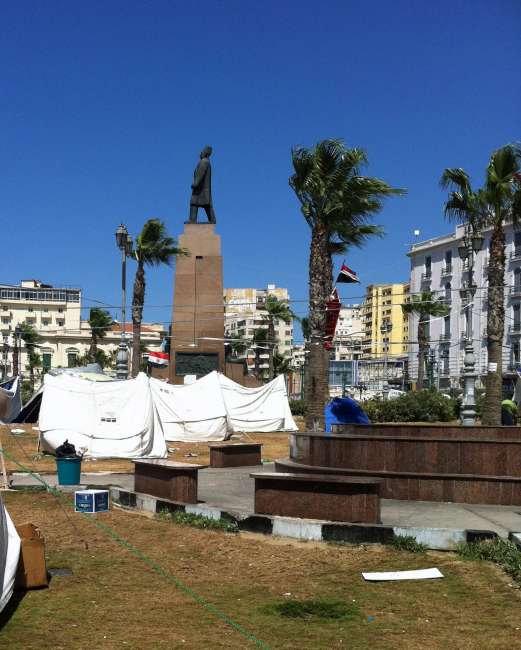
The latest popular revolt was that of January 25, 2011, also known as the Facebook Revolution. This time, people revolted against an oppressive regime that did not allow people to express themselves freely about politics. In 2005, President Mubarak announced for the first time that he would allow other people to run against him in the presidential elections. People saw this as a positive step towards a true democracy. In reality, this was a response to American pressure to push for democracy in Egypt. The results of the elections, however, were devastating. President Mubarak won over 99% of the votes and his party, the National Democratic Party (the NDP), and his other competitors were placed behind bars for election fraud! People lost hope in the political process and began to look for other means of bringing democratic change to Egypt.
Learning from Eastern European processes towards democracy in the 1990s, young Egyptian citizens networking through Facebook got together to apply these lessons to Egypt. They formed the first groups of nonviolent civil resistance in Egypt. Protests began in 2005 with tens of people. By 2009, calls for a protest on a Facebook page could draw a crowd of a couple of hundred people. The protests, however, did not have the critical mass required for a major revolution. The gap between the poor and the rich grew at an exponential rate between 2005 and 2010. The inflation rate for one year, 2008, was estimated at 30-40%. Reasons for this gap were the same as to the prelude of the 1977 revolt, mismanagement and theft of government resources in the form of unfair sales and bribes of epic proportions.
There were two factors that triggered the revolution. The first was that the aging President Mubarak announced that anyone wishing to run for office of president of the country may do so for the 2011 elections. At the same time, rumors were circulating around the government controlled media that Mubarak`s son was being groomed for president. By the end of 2010, it was clear that Mubarak`s son was running for the 2011 elections and all hopes for a true democracy were being dashed. This provided the fuel for the revolution, but it still needed a match to ignite it.
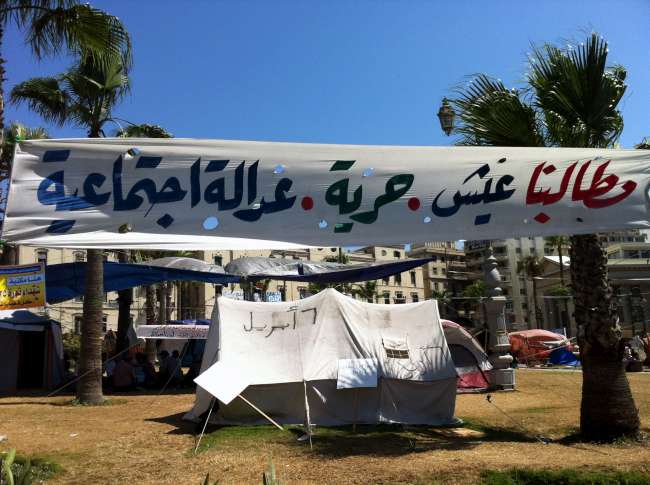
In January 2011, protests in Tunisia received little coverage and little was actually known about what was going on in the country. Tunisia was known to have one of the most oppressive dictatorships in the region. When the president fled the country due to a popular uprising that forced him out of office, it caught the imagination of all Arab citizens in the region, very much as it has inspired European citizens in 1848 to overthrow their monarchies. A call for a mass protest in Egypt on January 25, 2011 (specifically chosen to commemorate the massacre of the police station in 1952) was conducted using social media networks, such as Facebook. Protest tips were also included on the websites (on how to deal with the police, tear gas, and so on). This time, the critical mass of protesters was reached and the police was beaten out Egypt`s major cities of Cairo and Alexandria. Just like in the 1952 and 1977 revolts, the army was called in to restore order. The army, however, was at odds with Mubarak`s policy with letting his son “inherit” the presidency. They used the revolt to their advantage and convinced Mubarak to step down. They would not allow a “child”, as they would describe Mubarak`s son, to be their boss. The main headquarters of Mubarak`s ruling party, the NDP (of which his son was the head of) was burned in the revolts. It building today is intentionally left burned and there are talks of adding it to the nearby Cairo National Museum.
The story of Egypt`s popular revolts is not over, yet. One slogan that became the main banner of the 2011 revolt is “Dignity, Freedom, and Social Justice for all” very much summarizes the cry of all popular revolts in Egypt over the past century. Although a year has passed, and many corrupt officials of Mubarak`s regime are still in power, Egypt has probably gained the most from this revolt. Egypt`s former president, top aides, and two sons are being tried for corruption and murder charges. Egypt`s first democratically elected parliament is now a reality. There is now freedom to create political parties (and there are quite a few new political parties in Egypt now!). The Muslim Brotherhood is no longer outlawed and has a political party in parliament. The press is free to criticize the political practices of any elected official as well as the practices of the army. Only time will tell if the century old Egyptian struggle of self-rule will now be a reality.
References
Keywords: Cairo, Egypt, Muhammad Ali, King Farouk, Tahrir Square, Mubarak
Related Articles
- A Brief History of Ahmad Ibn Tulun Mosque
- A Brief History of Amr Ibn Alas Mosque
- Al-Rifai Mosque
- Sultan Farag ibn Barquq: The Mamluk Builder
- Egypt`s Blue Mosque
- Muhammad Ali: Founder of Modern Egypt
- The Largest Mosque in Cairo: The Sultan Hasan Mosque
- Ancient Egyptian Obelisks Travel the World
- The Last King of Egypt
- Imam Al-Shafie: Mausoleum and Legacy
- Napoleon and the Sphinx
- The Pyramids of Dahshur
- A Journey to Djoser`s Funerary Complex
- Cairo Tower and the CIA
- Alexandria`s Greek Past
- NDP Headquarters and a Century of Revolts
- Al-Azhar Mosque and University – Politically Charged Yet Neutral
NDP Headquarters Photos
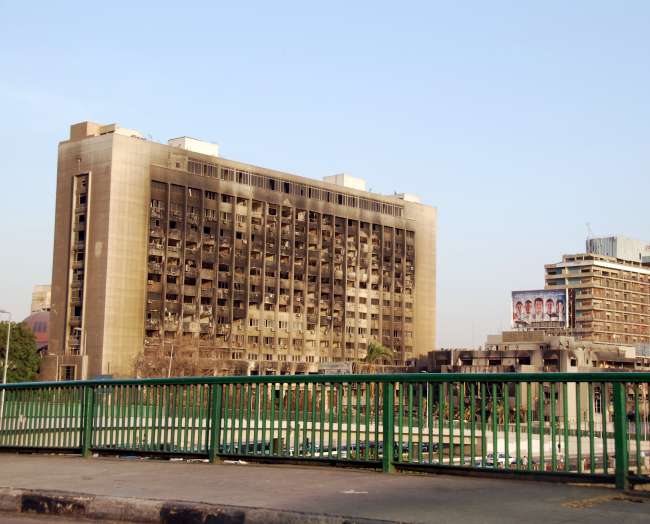
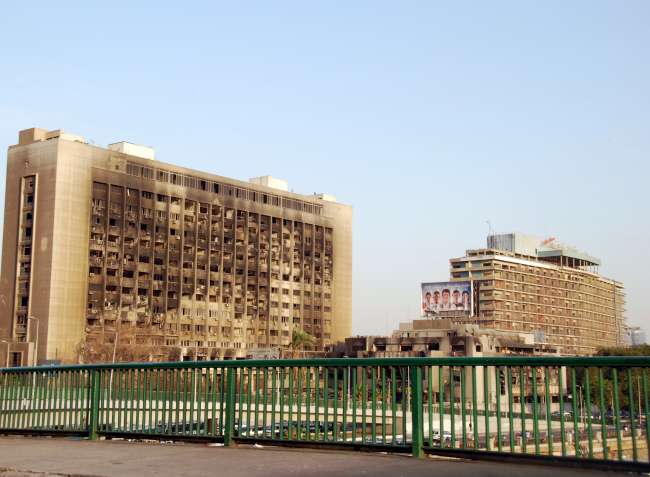
|

